Dear Artist,
On Monday, I was a member of a jury. All of the entries, 777 of them, had been previously juried by slide by a single outsider juror. The selected show of 55 paintings was now hung and five of us had to decide which were to be in the money. There were cash prizes ranging from $1500 to $250, as well as several prizes in kind of $1000. For a while we wandered silently around with our clipboards and made a tentative list of our favorites. After that we chatted about the works, variously picking holes in and singing the praises of some of them. Everyone had a say. Though there was a wide range of juror disciplines and tendencies, there was remarkable consensus.
I’m always interested in what jurors are thinking and saying. While some jurors tend to be blindsided by their education, and consequently speak a bit of nonsense, it seems to me that justice often prevails. But the old conflicts about the various camps of art — modern versus traditional — simply don’t exist in what I call “evolved” juries. All flags can now safely fly.
These days I’m noticing that juror’s eyes are attracted to casualness. Work that is overly stiff, no matter how well rendered, is passed by for works that have a more relaxed and easy-going delivery. This observation goes for abstract and realistic works, landscapes and mindbenders alike. Art with some bravura, that makes art look easy, gets the bucks. Fact is that people who paint well, generally with a few acres of canvas behind them, tend to be casual. In this particular collection, an understated, abstracted figure-study of limited range and shallow virtuosity attracted votes because of its casual simplicity. It aimed low and hit the mark. Other, more ambitious works, on closer examination, revealed too many flaws.
We all agreed on a large, complex and realistic oil of a Manila vegetable market in sunlight and shadow. It contained intervening dust and atmosphere, translucency, reflected light, counter-light, multiple figures in animated activity, even aerial perspective. Cruising up close, our eyes glazed with admiration, my fellow jurors and I caught ourselves saying that it was “casual.”
Best regards,
Robert
PS: “Perform with elan, brilliance and dash.” (Mihaly Csikszentmihalyi)
Esoterica: Time and again artists ask me what it is that jurors are looking for. This of course varies by juror, art trends and geography. But these days I’ve noticed that often, just as “rock breaks scissors and scissors cuts paper,” composition beats colour and colour beats drawing. Unusual treatments of standard subjects will generally turn heads. Boring is still boring and out of style in all genres. But raw talent and razzle-dazzle still bamboozles jurors. And maybe next year it will be different, but right now — it’s casual.
This letter was originally published as “On being casual” on August 27, 2004.
Have you considered a Premium Artist Listing? With each letter, an artist is featured at the bottom of this page. The Premium Artist Listings are a means of connecting artist subscribers through their work. Proceeds from each listing contribute to the production of The Painter’s Keys.
“Don’t show me that what you are doing is difficult.” (Pierre Parisien)
Featured Workshop
You know your paintings are good but you want them to be great. You want to be able to connect to a deeper source within you and then put that onto your canvas or paper.
To become aware of your depth, calm and genius that lives within your heart.
You will discover ways to go within your heart and soul in order to tap onto that special energy that is yours and yours alone.
This workshop will be a live virtual event. I will be there with you during the entire four days. I can’t wait as I am excited. Please email me if you have any questions….gwen@gwenfox.com
September 14 – 17, 2020, Location…Online
Register here: https://gwenfox.com/retreat/painting-deep-from-the-heart/
Featured Artist
Mary’s interest in pastel painting began during her years at Whitworth College in Spokane, WA where she majored in art and elementary education. Though she has worked in watercolor and oil as well as calligraphy, her interest has consistently turned primarily to pastel because of the medium’s potential for glowing, vibrant color and the harmony achieved in bringing together lights and shadows.

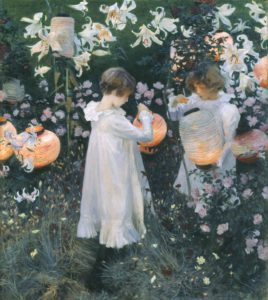
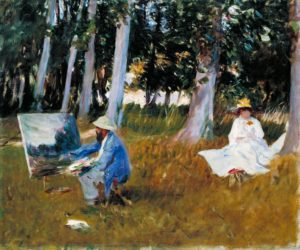
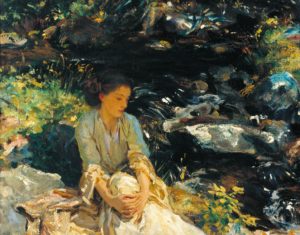
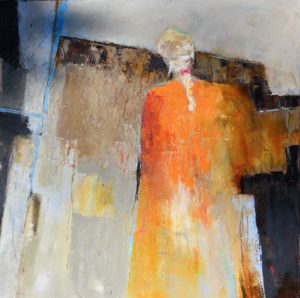
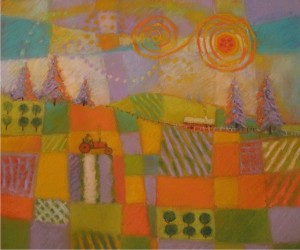



12 Comments
Yes! I love casual. I paint with a group of 10 girls, once a week we get together (pre Covid) . Each of us painting different amounts of time the rest of the week, some daily some not till next painting session. We are good friends and I feel we honestly critique each other……without fear., at least I do. I love to hear others opinions. Thanks for this letter Sara.
Yes, style and fad are transient with the times. Judging is subjective as influenced by circumstances, background, societal flux, etc.. I will never forget a rejection letter I once received from a national competition. A painting rejected the previous year became “Best of Show” in that current year. We can see what is chosen; yet we have to remain conscious of and true to our own interpretations regardless of awards. It’s the only way to develop uniquely better expression.
Casual….like the current credo for sex….easily transmits infectious fallacy.
As a 77 year old artist (I come from another medium) I’ve also been a juror– ranging from highschool poster contests to Filipino indigenous artworks, and even in Fine Arts students’ exhibits. So Robert’s thoughts on jury-mixes fascinated me. Usually I’m alone in one corner and the rest in the opposite during the first round. After some ping-pong of criteria for our respective favorites — I know I can’t fight their Education. Those with Fine Arts Education (with a Capital E) are my most rigid encounters.
Maybe my taste for ‘unschooled’ works is their nemesis–hahaha. Its probably my bias, as a non-filmschool dabbler in celluloid works– One who knew not the rules! It was a total surprise, at the 1977 Berlinale, my debut film Perfumed Nightmare– unpolished, quirky, unschooled– won the International Critic’s Jury prize. Might it have been for what your father called “rawness and razzle dazzle”? Thanks Robert, I don’t regret stubbornly remaining the “casual” artist in the past 45 years. Hope to meet you in the next life…
Kidlat Tahimik
PS about that Manila market painting that won… Sara, any chance to google that image? Just curious re its casualness…
I am curious about that painting, too!
Apologies for not including it here, Kidlat. The fabulous painting can be viewed on the original letter, here https://painterskeys.com/casual/
Thank you all, always for your insights and for your continued friendship.
Sara
Love reading this post. Could you please point to the elements of “casual” in this painting you mentioned?
To me it looked anything but.
I guess I’m wondering what its compared to.
Click on the originally published as. The image is there in one of Robert Genn’s old posts
No one wants to observe anyone or anything, straining. Casualness sounds like not caring, but it is actually an incredible balance between holding and letting go, kind of like riding the crest of a wave. Casualness is that place between two diametrically opposed things that binds them together, like confidence and trust, like giving and receiving, like allowing and being firm. Casualness, is the eye of the storm and the glide of the albatross. It is understanding, that you are in the hands of something larger, and that something large is in your hands. No need to strain.
I love your summation, Catherine. Feels right and so well said. Thank you!
To be in the flow and not struggling against it is casual, right? When you know longer know what you are doing and something else takes over, is that casual?
Wow that painting that won, though a great one, seems anything but casual to me! I guess casual is in the eye of the beholder. This is coming from someone who loves loose abstracts… and does what she loves, regardless of jurors. I am still fascinated by how jurors judge, though, so thank you- so interesting. I always enjoy reading your newsletters.